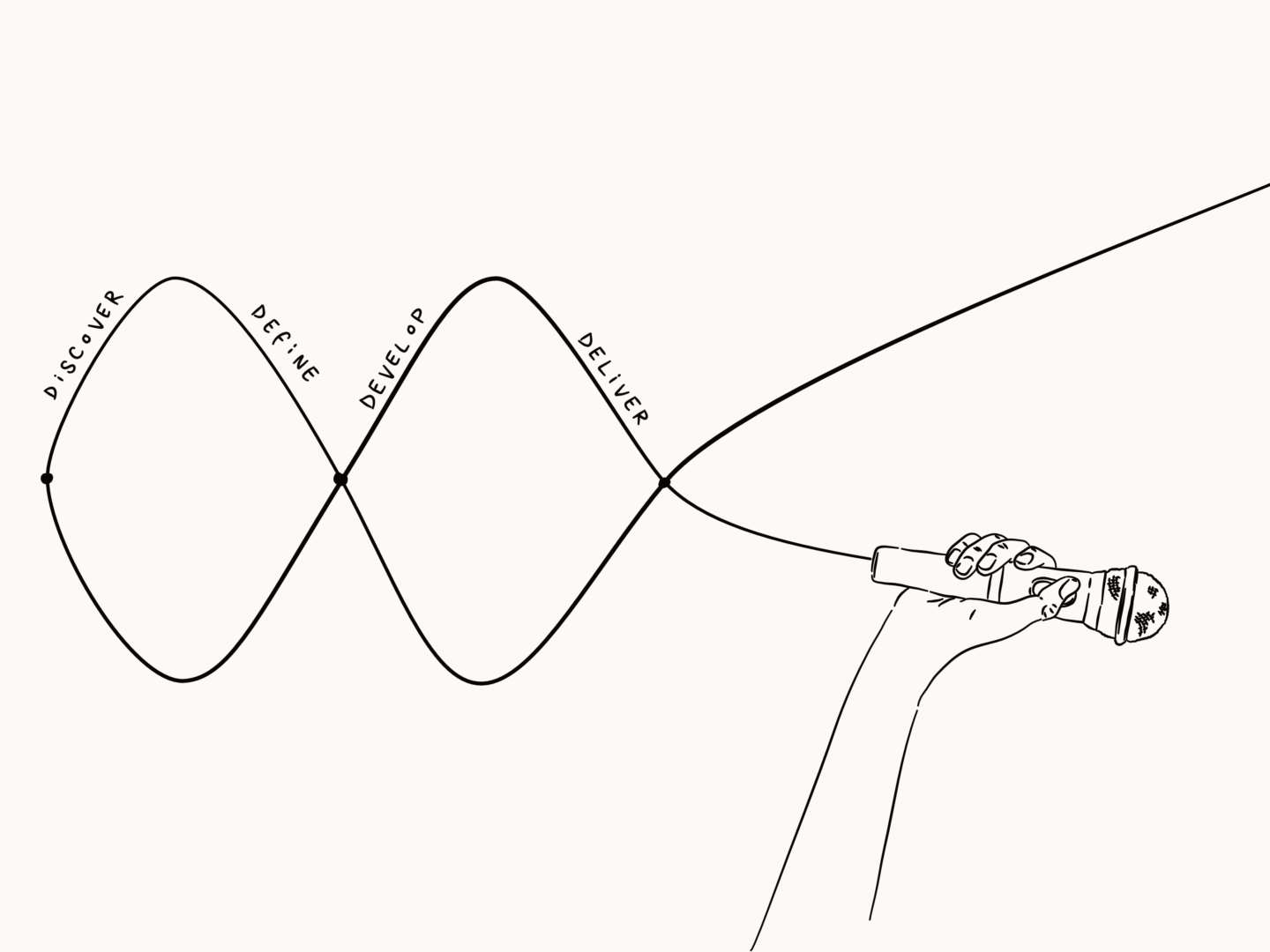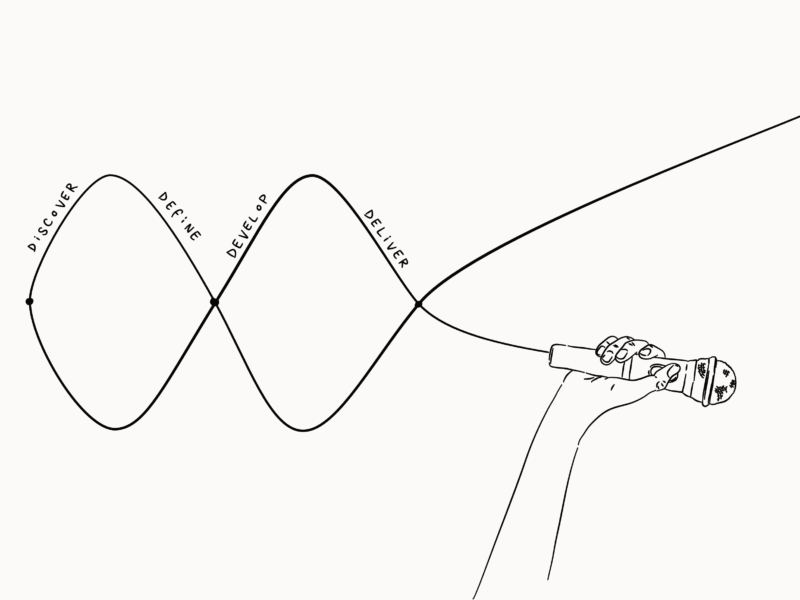A little while ago I went to Design Thinkers Bootcamp, a week-long course to teach you the tools you need to get to work creating human-centred products and services and to reinvigorate your excitement for making. I had a great time and came away with a few new tricks and a bucket load more confidence.
I told a friend about the course and we got to talking about design thinking, and he asked me what design thinking even had to do with design anymore – “hasn’t it just become a karaoke tool for solving business problems?”. And as with all tough questions, I didn’t have a good answer then but I did think of some things I wanted to say on the journey home. These are those thoughts.
First, what is design thinking? “Design thinking is a human-centred approach to innovation” (Tim Brown, CEO of IDEO) which is based on a number of tools and processes commonly used by designers. However, its use is not exclusive to design as it can be applied to almost any problem. There are four rough stages of design thinking, as defined by the Design Council’s double diamond:
- Discover – where you research the problem and most importantly everyone it might affect through interacting with them
- Define – where you analyse and narrow down that research into small nuggets of human insight which you can work on
- Develop – where you start to create and prototype solutions based on those small nuggets of insight and test them with users as you go
- Deliver – where you create a final product which is feasible (can be built), desirable (wanted), and viable (commercially sensible)

As there are lots of people practising and selling different versions of design thinking, these stages often take on different names or get broken out into smaller parts. But, the overall process and the focus on the user remains through every model.
That similarity remains because design thinking always serves a specific purpose. It’s used to create practical, well-developed, and most importantly human-centred solutions to real-world problems.
So what does that have to do with “design”? Well that all comes down to how you view design. Personally, I think Todd Olson’s definition works very well here:
(It’s worth reading his thinking behind that definition)
Design isn’t about making things pretty, as it is often seen to be, it’s about creating products or services that work for real people. That means that design can, and ultimately, should be a part of every business.
That said, I will admit, it has been co-opted and made trendy. As I mentioned earlier so many businesses have made their own branded versions, either to sell to clients or as classes. Often when design thinking is rebranded it can become overly codified or seen as a stamp to put on a project which instantly makes it “design”. Just going through the motions of discover, define, develop, deliver with no understanding of why you’re doing it or taking the time to create more of a culture around putting people at the core of solutions, of research before business goals being set, of testing and failing fast, isn’t going to solve all of a company’s issues. It certainly isn’t going to make every business a design business.
However, I don’t think that’s something we should be too worried about. Those changes take time, and there’s plenty of space for the design community to start to shape how those changes are going to impact the future. What’s more important is that human-centred solutions are becoming the norm, that businesses are starting to actually engage with their users to make products they need and ultimately want to use.
Design thinking certainly isn’t perfect, but it’s a force for good.


